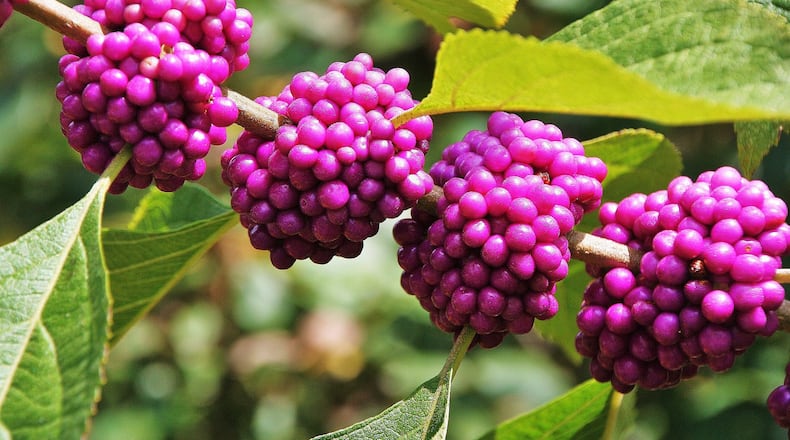The American beautyberry, one of Georgia’s most common native shrubs, lives up to its name this time of year.
Its berries, now greenish-white in ball-like clusters along slim branches, are fast ripening. Any day now, they will turn a lustrous magenta color that will seem to radiate amidst the late summer greenery — “like amethyst jeweled bracelets,“ as one writer said.
The beautyberry's scientific name, Callicarpa americana, reflects its attractiveness: Callicarpa derives from two Greek words meaning "beautiful" and "fruit."
If you stroll in the outdoors between now and late fall, chances are good that you will behold the beautyberry’s striking, glossy berries in semi-sunny areas of open woods, pinelands and other wild places. The 4- to 6-foot tall plant is native to a wide portion of the South.
The beautyberry, though, has much more going for it than just good looks. Few of Georgia’s native plants are more wildlife-friendly than the beautyberry — and in all seasons of the year. In spring, its small, pale lilac flowers are rich nectar sources for honeybees and other pollinators. In early summer, white-tailed deer and other animals munch on its protein-rich leaves and stems. In fall, its energy-loaded berries provide sustenance for more than 40 species of birds and other wild creatures.
The bright berries will persist into winter, even when the bush has lost its leaves. Even in late winter, when remaining beautyberries shrivel up and become raisin-like, they still will be good food for wildlife.
Humans also benefit from the beautyberry. The leaves, when crushed and rubbed on the skin, can be an effective insect repellent — a quality confirmed scientifically. Native Americans made teas and potions from the plant to treat a variety of ills.
Because of the beautyberry’s many attributes, the Georgia Native Plant Society named it the 2018 Plant of the Year.
IN THE SKY: From David Dundee, Tellus Science Museum astronomer: The moon will be last-quarter on Sunday night. Brilliant Venus is very low in the southwest just after dark and sets about two hours later. Mars, also shining brightly, is in the southeast around dusk. Jupiter is in the southwest at dusk. Saturn is low in the southwest just after dark.
About the Author
Keep Reading
The Latest
Featured


